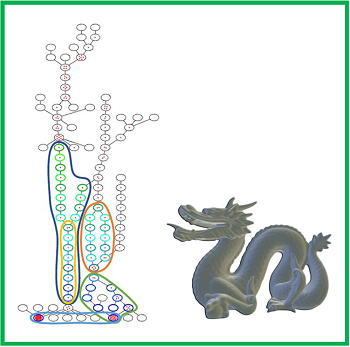Competitive Advantages
- Reduces misprints
- Saves time by identifying anomalies before printing
- Cost effective
Summary
USF inventors have developed various techniques to infer the quality of point cloud-based 3D objects using topographical data analysis (TDA). A tool called Mapper is used to extract topological information about the layer-by-layer connectivity. Persistent homology is used for the detection of connected components and holes within a printer layer. Together these tools are used to analyze both the printed space and empty space created by the model. The invention enables the users to investigate print qualities of the model and identify potential anomalies like connectedness, watertightness, and holes/tunnels in the printed model that appear in the final product before it is physically made. This helps to reduce misprints, saving printer time and money wasted on material.

Mapper Graph of the Stanford Dragon
Desired Partnerships
- License
- Sponsored Research
- Co-Development